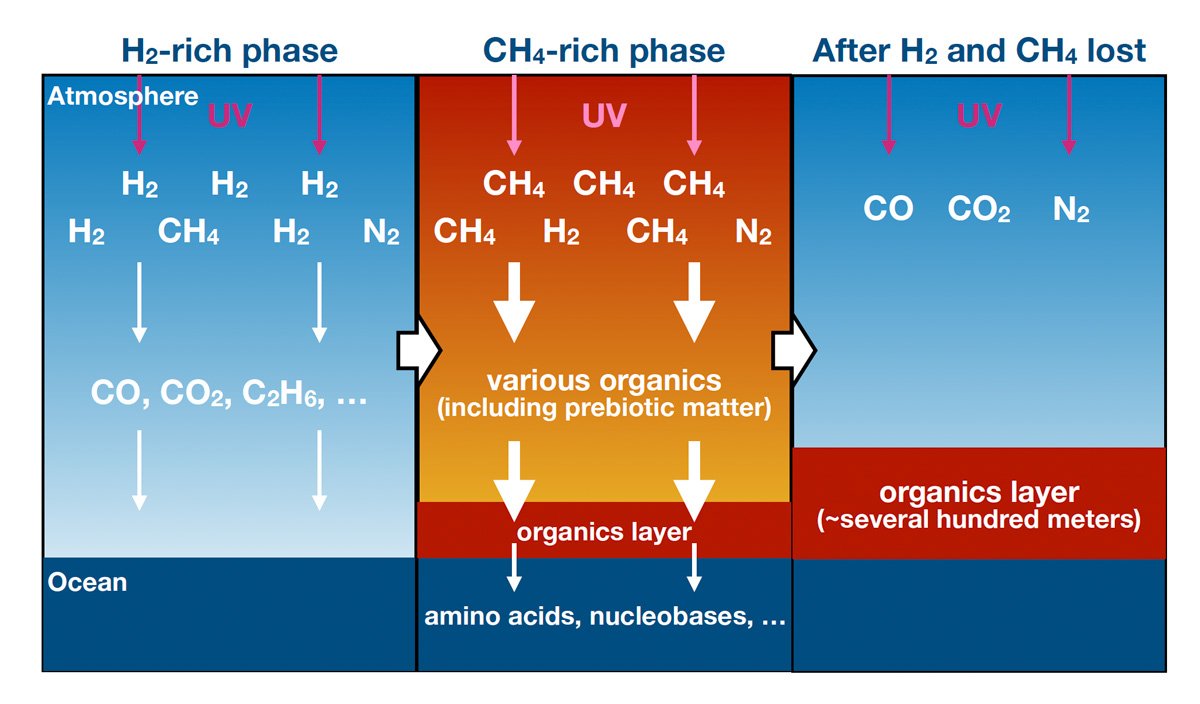

While the atmosphere was toxic, the conditions were suitable for the production of organic molecules.

Illustration of a primordial Earth. (Image Credit: Tohoku University).
New Delhi: Researchers from Tohoku University in Japan have developed a one-dimensional photochemical model of the atmosphere of a primordial Earth. The model was developed to understand how the ultraviolet light pouring out of an energetic young Sun interacted with the chemicals in the atmosphere of the Earth, to understand how the atmosphere itself evolved over time, and to better understand the emergence of life. An ancient Earth was considerably different from the familiar green planet we know today, with an atmosphere rich in methane and hydrogen, as well as an abundance of metallic iron on the surface.

The evolution of the Earth’s atmosphere. (Image Credit: Yoshida et al.).
In the presence of ultraviolet radiation, the chemical reactions in the hydrocarbons would have resulted in the formation of organic molecules, or building blocks of life that were precursors to essential molecules in biochemistry, such as amino acids and nucleic acids. However, how exactly the atmosphere evolved over time is difficult to track, which is why the researchers developed the photochemical model. The research reveals that the atmosphere was initially rich in hydrogen, most of which were lost to space. The surface had hydrocarbon lakes made of acetylene produced by methane, which would have provided some shielding from UV radiation, limiting the breakdown of water vapour, and subsequently, the loss of methane, encouraging the formation of more organic molecules.
An enriched Earth
The model allows researchers to better understand if the conditions that allowed life to emerge are similar to other planetary systems, or unique to Earth. A paper describing the findings has been published in Astrobiology. One of the study authors, Tatsuya Yoshida says, “There may have been an accumulation of organics that created what was like an enriched soup of important building blocks. That could have been the source from which living things first emerged on Earth.” The finding also helps explain why Earth is a habitable planet, even though Mars and Venus started off as similar terrestrial worlds, with similar atmospheric conditions.
Next Article
Follow us on social media













